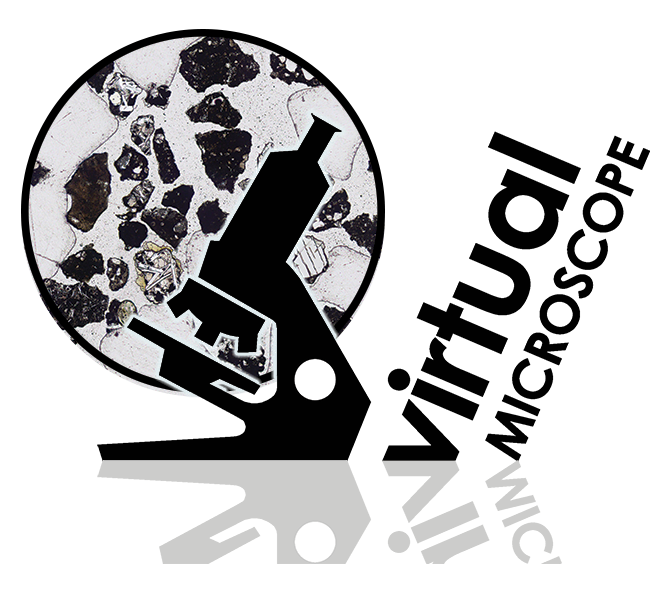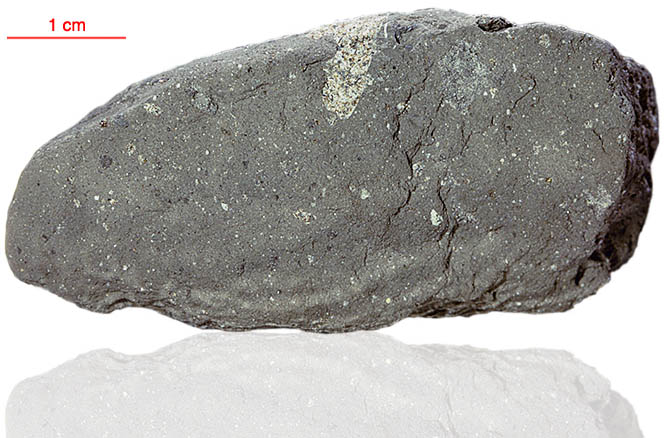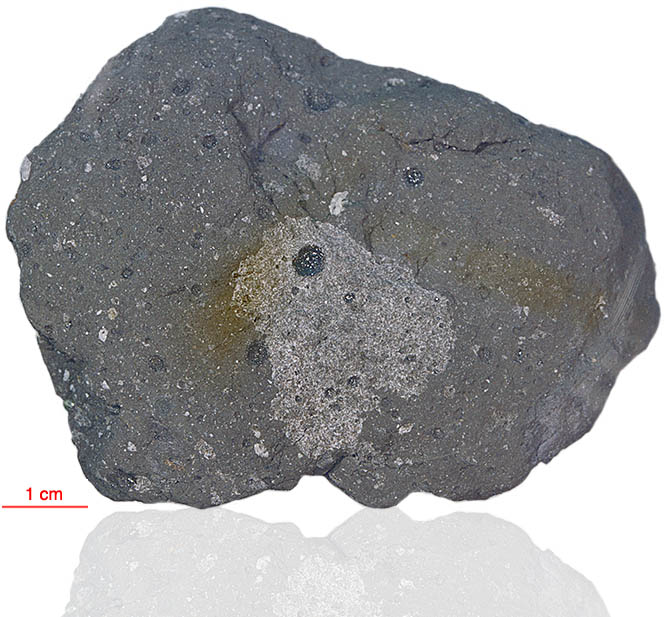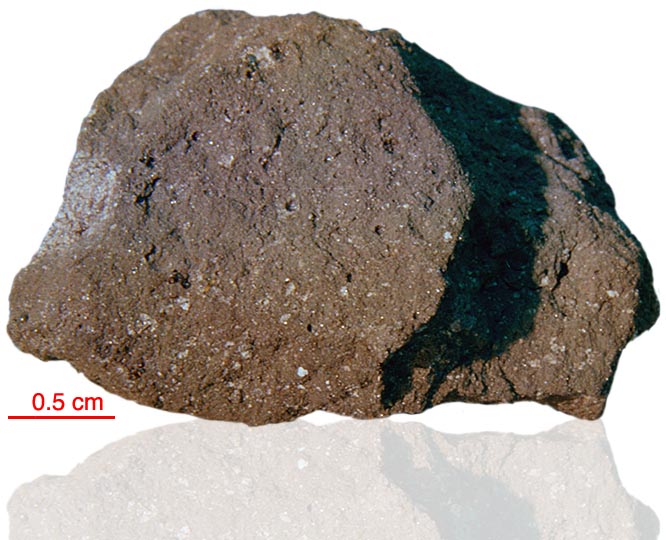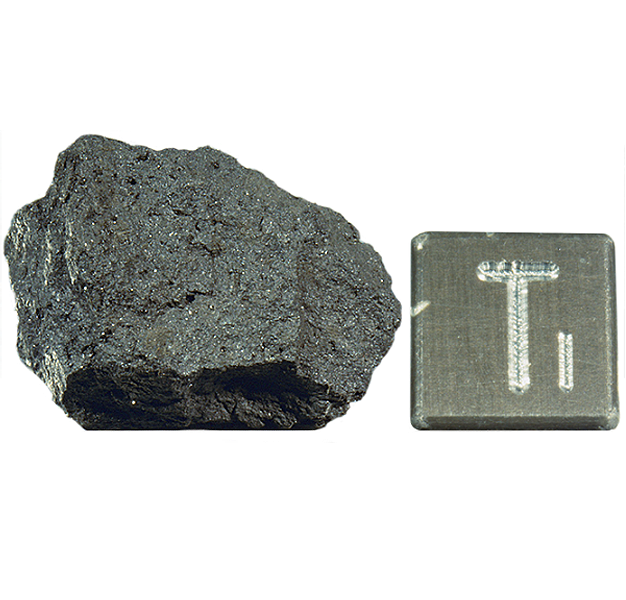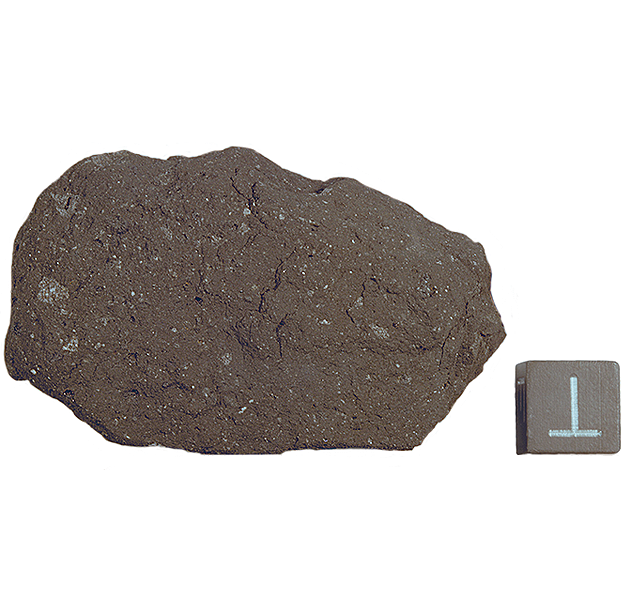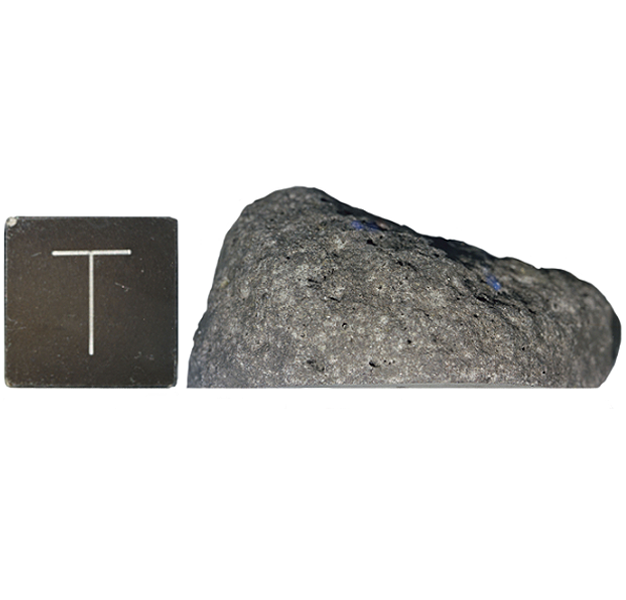
Fact sheet
10020 is a variety of fine-grained ilmenite rich basalt with low potassium concentrations like many of the lunar Mare basalts. The sample is rounded and covered with micrometeorite craters. It has been formed from a high Ti-, Fe-rich volcanic liquid that cooled rapidly and contains both Mg-rich olivine (as phenocrysts) and cristobalite (in the fine-grained groundmass). It crystallised 3.77 billion years ago and has been exposed at the surface for around 130 million years.
The overall texture in thin section is characterised by an open network of randomly-oriented plagioclase laths and ilmenite platelets. Olivine phenocrysts are up to three times as large as the other major minerals and are commonly clumped together in groups, suggesting that olivine may have formed before the magma was extruded.
Further details of this and other Apollo samples are here: http://curator.jsc.nasa.gov/lunar/
The Apollo 11 samples create an iconic collection since they were the first rocks collected by humankind that were returned to Earth from another solar system body. The Apollo 11 team collected and returned 22 kg of rock and soil samples.
Apollo 11 launched from Cape Kennedy on 16 July 1969. An estimated 530 million people watched Armstrong's televised image and heard his voice describe the event as he took "...one small step for a man, one giant leap for mankind" on 20 July 1969.

